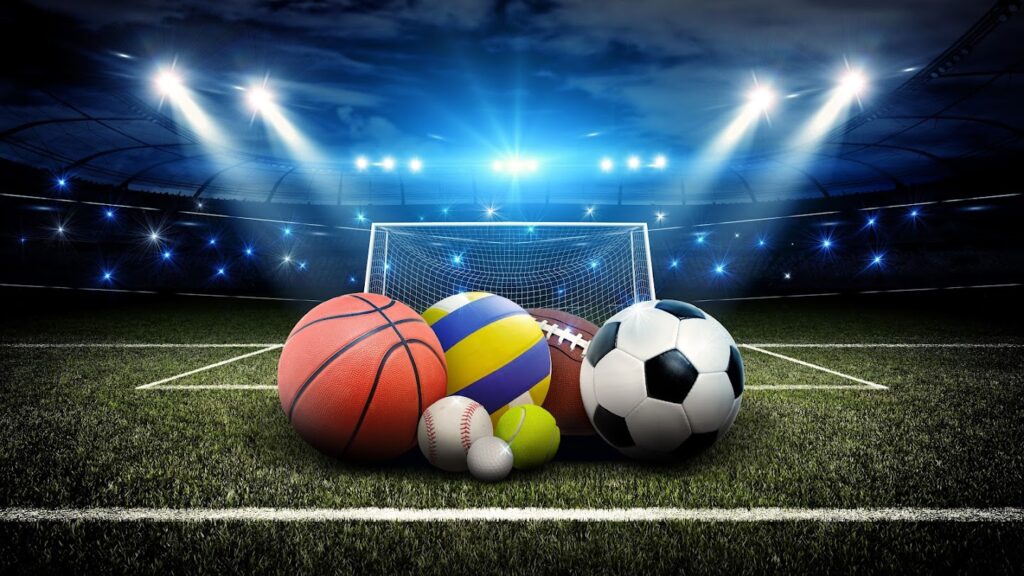Harmonicode Sports: The Future of Athletic Performance and Digital Innovation

Introduction to Harmonicode Sports
When you hear the term Harmonicode Sports, it might sound like a futuristic blend of music and athletics, and in a way, that’s not too far off. is an emerging concept that sits at the intersection of sports science, digital coding, and human performance. It’s not just about physical training anymore—it’s about harmonizing the body with technology to unlock new levels of performance, data tracking, and athletic development.
In today’s sports world, athletes are constantly looking for ways to stay ahead, whether it’s through advanced nutrition, innovative equipment, or smarter training programs. Harmonicode Sports takes this pursuit to another level by creating a system where technology doesn’t just assist the athlete but becomes part of the game itself. Think of it as a digital layer that enhances real-world sports while also opening doors to entirely new types of athletic competitions.
The rise of Harmonicode Sports shows that the future of athletics won’t just be decided by who’s stronger or faster—it will also depend on who can adapt to new digital ecosystems, understand performance data, and use technology as a competitive advantage.
The Philosophy Behind Harmonicode Sports

At its core, Harmonicode Sports is built on the idea of harmony between physical performance and coded systems. Unlike traditional sports, which focus solely on athletic ability, this approach integrates measurable data, analytics, and interactive coding structures into the athletic experience.
The “Harmonicode Sports” aspect comes from the balance it creates: athletes don’t just train harder, they train smarter. Every movement, every stride, and every heartbeat can be measured, analyzed, and optimized. Meanwhile, the “code” aspect represents the digital backbone that makes this possible. With coding platforms and AI-driven analytics, athletes can receive instant feedback, predictive performance models, and even personalized training regimes.
This philosophy represents a shift from intuition-based sports to knowledge-driven sports. Coaches and players are no longer making decisions based solely on gut feelings or past experience—they now have hard data to back up their strategies. The harmony between human instinct and machine learning is what sets Harmonicode Sports apart.
How Harmonicode Sports Works in Practice
You might be wondering: what does Harmonicode Sports actually look like in real life? Imagine stepping onto a basketball court, but instead of just relying on your physical ability, you also have a dashboard tracking your shooting accuracy, stamina, and movement efficiency in real time. Or picture a runner whose pace, stride, and oxygen intake are all monitored digitally, with AI suggesting adjustments mid-race to maximize performance.
Harmonicode Sports uses a combination of wearable technology, motion sensors, coding platforms, and artificial intelligence to create these environments. Athletes wear smart devices that gather data during training and competition. This data is then translated through code into actionable insights. Some systems even gamify the experience, adding point systems or performance challenges based on specific metrics.
It’s not limited to professional athletes either. Casual players and fitness enthusiasts can use Harmonicode Sports systems to improve their own workouts. By getting immediate feedback and personalized suggestions, even an amateur can train like a pro. This accessibility is what makes the movement so promising—it democratizes elite-level performance tracking.
The Role of Technology in Harmonicode Sports
Technology is at the heart of Harmonicode Sports. Without advancements in coding, data science, and wearables, this concept wouldn’t exist. Let’s break down the key technologies driving it forward:
- Wearables and Sensors – These devices capture real-time information about heart rate, muscle strain, speed, and motion. They are the athlete’s digital skin, turning raw activity into measurable data.
- Artificial Intelligence – AI acts like the coach of the future, processing massive amounts of data and giving athletes predictive advice. For example, it can warn when fatigue is setting in or suggest the best recovery routine.
- Data Visualization Tools – Numbers alone don’t help athletes. Harmonicode Sports platforms turn complex data into simple dashboards, graphs, and even virtual simulations that are easy to understand and apply.
- Coding Frameworks – The “code” part of Harmonicode Sports involves building interactive platforms where athletes and coaches can customize what they want to measure. This adaptability ensures that the system can evolve with the sport.
In essence, the role of technology is not to replace the athlete but to extend their natural capabilities. It’s like having a personal digital assistant on the field, one that knows your body better than you do.
Benefits of Harmonicode Sports for Athletes
The appeal of Harmonicode Sports is not just theoretical—it delivers real, tangible benefits to athletes across different levels.
1. Performance Optimization
Athletes no longer need to guess whether their training is effective. With Harmonicode Sports, they can see measurable progress in speed, endurance, or skill. Every detail is tracked and improved with precision.
2. Injury Prevention
One of the biggest advantages is the ability to spot early signs of injury risk. By monitoring stress levels, joint pressure, and fatigue, the system can alert athletes before small issues turn into major problems.
3. Mental Edge
Confidence is key in sports, and knowing you have data on your side can be a huge mental advantage. Harmonicode Sports boosts athletes’ belief in their preparation by showing them undeniable evidence of their growth.
4. Equal Opportunity
Not every athlete has access to elite coaches or training facilities. Harmonicode Sports makes advanced analytics more accessible, giving underdog athletes a chance to compete on a more level playing field.
These benefits are why coaches, sports organizations, and even casual players are increasingly exploring Harmonicode Sports platforms.
Challenges and Criticisms of Harmonicode Sports
Like any new innovation, Harmonicode Sports isn’t without its challenges. One of the main criticisms is that it could make sports too reliant on technology. Traditionalists argue that sports should be about raw human talent, not who has the best gadgets or coding system.
There’s also the issue of cost. While some wearable devices are affordable, advanced Harmonicode Sports platforms can be expensive, creating a divide between those who can access it and those who can’t. Accessibility is crucial if this movement is to grow on a global scale.
Harmonicode Sports Another concern is data privacy. With so much personal information being collected, from heart rate to recovery cycles, there are legitimate questions about who owns this data and how it might be used. Ensuring strong protections for athletes is a necessary step moving forward.
Despite these challenges, the potential benefits are hard to ignore. As the technology becomes more widespread and affordable, many of these issues could be resolved, paving the way for broader adoption.
The Future of Harmonicode Sports
Looking ahead, Harmonicode Sports has the potential to reshape how we think about athletics altogether. In the next decade, we might see hybrid sports leagues where digital coding elements are integrated directly into the competition. Fans could watch games with real-time player stats, creating a more immersive spectator experience.
On the training side, Harmonicode Sports could become the standard for youth development programs, helping young athletes train smarter from the very beginning. Instead of wasting years on ineffective routines, they could follow data-driven paths that maximize their potential.
Even beyond sports, this approach could influence physical education, rehabilitation, and general fitness. Imagine rehabilitation centers using Harmonicode Sports platforms to track patient recovery or schools implementing it to encourage smarter physical activity among students.
The possibilities are vast, and the momentum is already building. Harmonicode Sports isn’t just a trend—it’s a movement that could redefine athletic performance for generations to come.
Conclusion
Harmonicode Sports represents the fusion of athleticism and technology in a way that feels both innovative and inevitable. By harmonizing human performance with coded systems, it offers athletes a smarter path to success, reduces injury risks, and levels the playing field.
Of course, there are challenges to overcome, from cost barriers to data privacy concerns. But as the technology matures, these obstacles will likely become less significant. The core idea—that sports can evolve by integrating coding and digital Harmonicode Sports—remains powerful and exciting.
In the end, Harmonicode Sports is not about replacing traditional athletics but about enhancing it. It’s a reminder that in the digital age, even age-old human pursuits like sports can find new dimensions, new strategies, and new ways to inspire.


